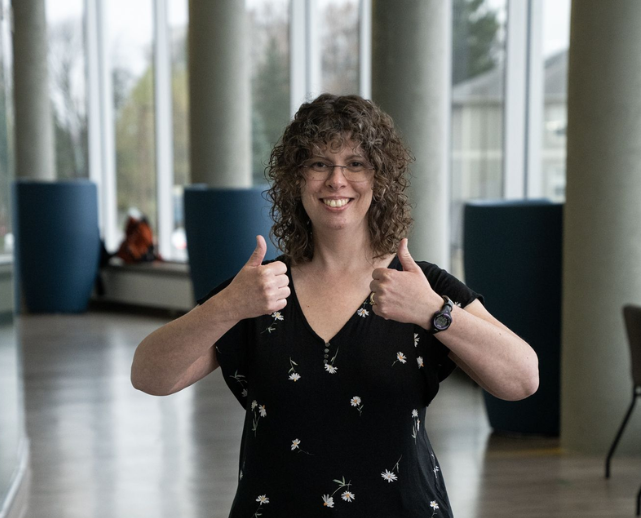
When I was six years old, I was diagnosed with epilepsy. I would experience focal unaware—where I would lose awareness of my surroundings—and tonic-clonic seizures, the kind most people imagine with full-body convulsions.
I went years living with that until I eventually went to the Epilepsy Monitoring Unit (EMU) at University Hospital (UH). They did an electroencephalogram (EEG) and put subdural electrodes into my skull to figure out where my seizures were coming from. I still have the scars—if you run your fingers along my head, you can feel the indents.
When the doctors told me I was a candidate for brain surgery, I wasn’t nervous. Before the procedure, I met a man who said, “I have epilepsy and I’m driving now. One day, you’ll drive too.” Those words gave me hope. I believed this surgery could change my life.
The neurosurgeons removed five centimetres of my brain, and it stopped my seizures during the day. However, I continued to experience nocturnal seizures during REM sleep. Waking up after one of these episodes felt like being bashed in the skull—my head ached, I was physically drained and my mind was foggy. The day after was a complete write-off. At my worst, I was having four or five nocturnal seizures a month.
After decades of managing these night-time seizures, I returned to the EMU in 2022. This time, Dr. Ana Suller Marti and her team discovered the seizures were coming from a deeper part of my brain, an area called the insula. They recommended a procedure called a radiofrequency thermocoagulation, which uses lasers to burn tiny areas of brain tissue. Dr. Jonathan Lau, a neurosurgeon, ended up performing an ablation of 19 contact points.
Recovery wasn’t easy. When I first came home, I didn’t recognize my house. I couldn’t even remember who my son was. It was scary, but with time, I started to feel like myself again.
Now, I’m thrilled to say it’s been a year since my last nocturnal seizure. The difference is incredible. I’ve returned to work and I’m driving—just like that man promised. I’m so grateful to Dr. Suller Marti, Dr. Lau and the entire EMU team. They're caring, compassionate and have changed my life for the better.
Through it all, my husband, Adrian, and our son, Christian, have been my greatest support. Christian even learned seizure first aid when he was just four. One night, he helped me through a seizure and then calmly went back to bed.
My journey has inspired me to support others with epilepsy, mentoring them through their own challenges. I’m also proud to say I founded the Epilepsy Support Centre for Windsor-Essex, which is now part of Epilepsy Southwestern Ontario. When I realized there wasn’t any help available for people with epilepsy in Windsor, I knew I had to do something.
On top of that, I started Thumbs Up for Epilepsy, where people paint their thumbnails purple to start conversations about epilepsy. It’s a simple but powerful way to spread awareness—and it has grown into a global movement.
I choose to take part in these initiatives because I want to make a difference in this world. I truly believe when there's no hope, you must give hope. And so, I’ll keep telling people, “Get your brain burnt—it’s worth it.”